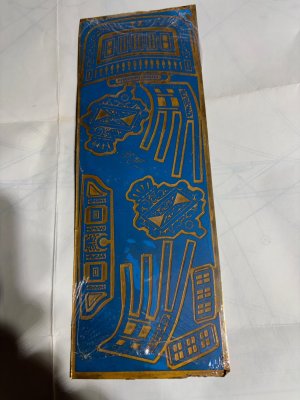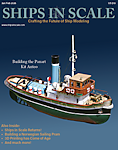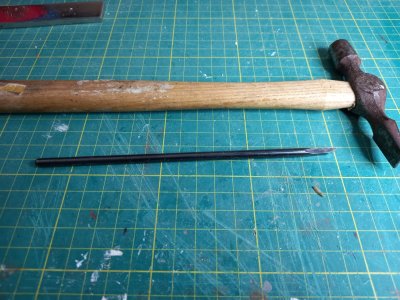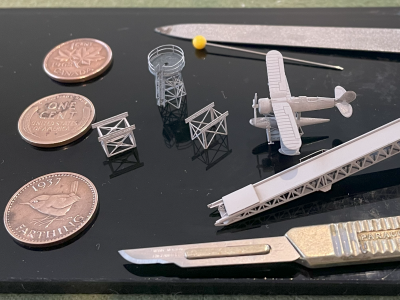Currently working on HMS Peregrine (Sergal). One of the parts is a brass plate with various patterns (see photo). I've never worked with type of part.
The instructions are as follows:
Preparing the Photo-etched Brass Parts. Lay the photo-etched plate on a flat work surface, and paint
the framework with dark blue matt acrylic paint. Paint the window glass areas with light-grey acrylic paint to simulate reflected sky. When the paint is
dry, lightly sand the surface with fine (600-grain) paper until the raised details of the plate become paint-free and polished, the paint remaining in the
incised portions. Cut out the pieces with tin shears or strong scissors (noting that the windows are not cut out individually) and finish the edges carefully
with a file. Varnish the brass to keep it shiny.
I have couple of questions
.1. How do I cut out the parts cleanly? The instructions suggest tin shears but there is some intricate cutting involved. Are there better tools to use ?
2. Is there any prep work required before painting the plate?

The instructions are as follows:
Preparing the Photo-etched Brass Parts. Lay the photo-etched plate on a flat work surface, and paint
the framework with dark blue matt acrylic paint. Paint the window glass areas with light-grey acrylic paint to simulate reflected sky. When the paint is
dry, lightly sand the surface with fine (600-grain) paper until the raised details of the plate become paint-free and polished, the paint remaining in the
incised portions. Cut out the pieces with tin shears or strong scissors (noting that the windows are not cut out individually) and finish the edges carefully
with a file. Varnish the brass to keep it shiny.
I have couple of questions
.1. How do I cut out the parts cleanly? The instructions suggest tin shears but there is some intricate cutting involved. Are there better tools to use ?
2. Is there any prep work required before painting the plate?














 )
)